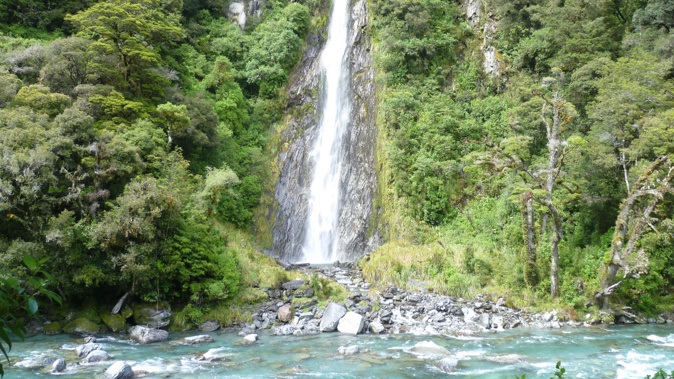
One of my favourite Kiwi road trips can be mistaken as an unsung feeder route in South Westland, stitching the West Coast’s Glacier Country to the glittery allure of Wanaka and Queenstown. Rushing is the problem. Anyone who races through the ravishing Haast Pass Highway is unwittingly short-changing themselves. Set aside the time to devour its epic glories. As the last mountain pass to be constructed over the Southern Alps and only fully chip-sealed in 1995, this 140km-long panoramic alpine pass still exudes a “final frontier” sense of escapism as it threads its way through South Westland’s primeval forests. The route had long been used by Māori warriors and greenstone (pounamu) gatherers, as they traversed the Main Divide.
Julius von Haast, a rather ego-centric surveyor who crossed the pass in 1863, shamelessly named the route after himself, despite being beaten to the punch by a gold prospector, Charles Cameron, who achieved the feat a few weeks earlier. For the next century, narrow bush tracks were the only means of passage across Haast Pass, until the shingled highway officially opened in 1965. I’ve just completed another trip through the region in the bright summer sunshine – and it’s
From the southern end, you enter the Heidi-country deliciousness of the Makarora Valley. Be sure to head to the Blue Pools, accessed via an effortless 30 minute return walk through silver beech forest, across boardwalks and a swing-bridge to the translucent pools in the Makarora River. These serenely still azure pools are a feeding ground for large brown and rainbow trout, which you can spot with crystal-clear precision from the bridge. The glacier-fed water is so gin-clear, the resident fish seemingly appear to be suspended in air.
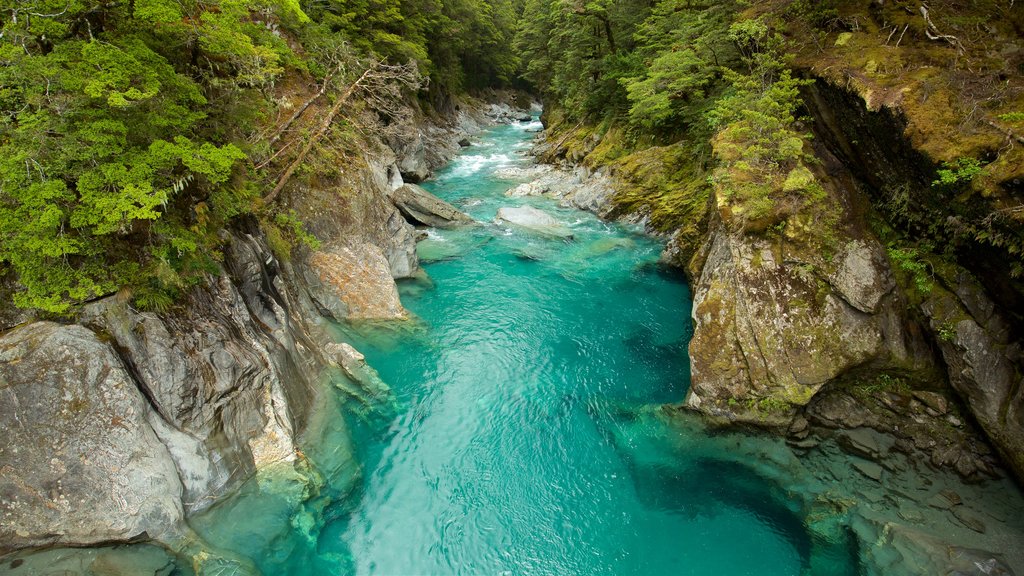 Photo / Supplied
Photo / Supplied
Thirty minutes north on the Haast Pass Highway, amid the seraphic landscape of towering peaks and rainforest, welcome to a wonderland of waterfalls. First up, Fantail Falls. Despite a plethora of native birds whooshing and trilling overhead, this waterfall doesn’t take its name from the birdlife, but because the base of the fall splays out in a triangular fantail-shape. This would be quite the water feature, to impress your guests in the garden. Apparently, these are the most photographed of the area’s smorgasbord of falls, but it’s Thunder Creek Falls, further up the road, that struck me as the biggest pixel-burner. Hurtling down into the Haast River from a 28 metre high drop, Thunder Creek is a boastful exhibitionist, powered with the riotous rush of a fire hydrant.
The waterfall height also serves as stark lesson on just how high the glacier field was during the last ice age, 12,000 years ago. Above the treeline at Thunder Creek, clinging implausibly to the vertiginous slopes, you’ll notice gardens of snow tussocks, dainty flowering herb fields and mountain buttercups sprouting, flourishing against the odds. For more vertical aqua magic, Roaring Billy is a 25 minute return walk, through a densely vegetated forest grove of emerald tree ferns - an absolutely enchanting walk that Weta Workshop could not improve on. But the highway’s most theatrical trump card is the ominously named Gates of Haast. This narrow highway crossing over the Haast River, hemmed in by canyon-like cliff walls and gigantic boulders of tumbling schist, is a striking sight as the surging waters thunder through the gorge like a freight train.
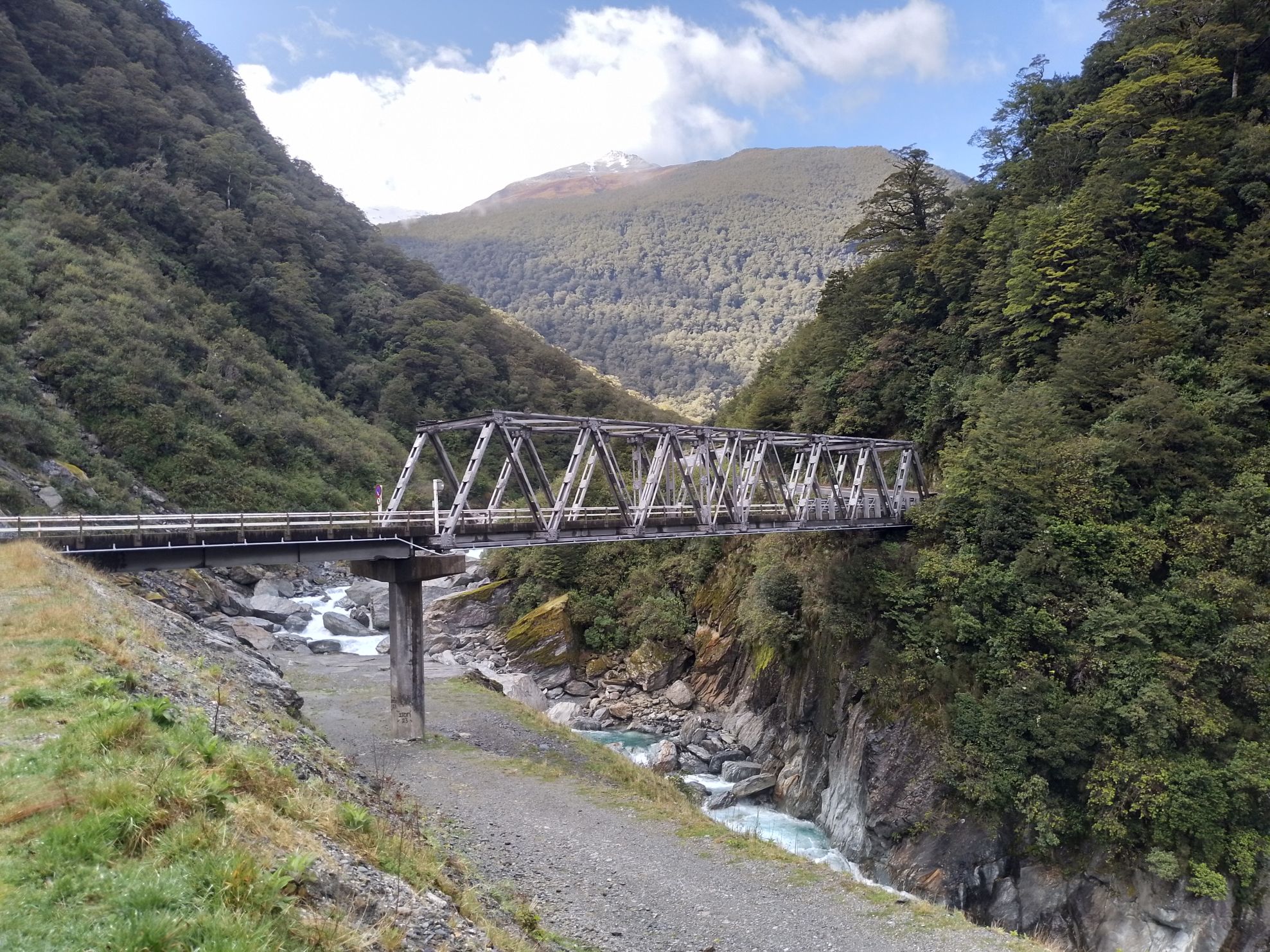 Gates of Haast. Photo / Mike Yardley
Gates of Haast. Photo / Mike Yardley
Adding to the scenic medley, the foaming surf of the Tasman coastline shuffles closer into view, as the highway skirts undulating forests that appear to float in the tea-stained waters of the lowland swamps, strung around Haast. After stopping for the unexpected delight of a tub of Shaved Ice, sold on the roadside in Haast Township, I headed 30 minutes up the highway to one of the West Coast’s most dramatic look-outs, Knight’s Point. From there, I checked in for a stay at one of the nation’s greatest nature lodges, Wilderness Lodge Lake Moeraki.
The lodge site was the construction camp for workers, who knocked-off the last unroaded stretch of the Haast Pass Highway. And that lack of road access is what saved the glorious rainforest from being clear-felled for agriculture. Cloaking the fertile valley floor, the many layers of the rainforest is a reminder of what once carpeted the West Coast valley floor, prior to being transformed into farmland. The Wilderness Lodge was opened in 1989 by Anne Saunders and Gerry McSweeney, two towering conservation giants, who still own and operate the retreat today. They are the most charming, charismatic and generous hosts. Their unbridled passion for conservation and the celebration of nature’s splendour is infectious. Trailblazers in nature tourism, the Moeraki Valley is the largest unmodified rainforest valley on the West Coast.
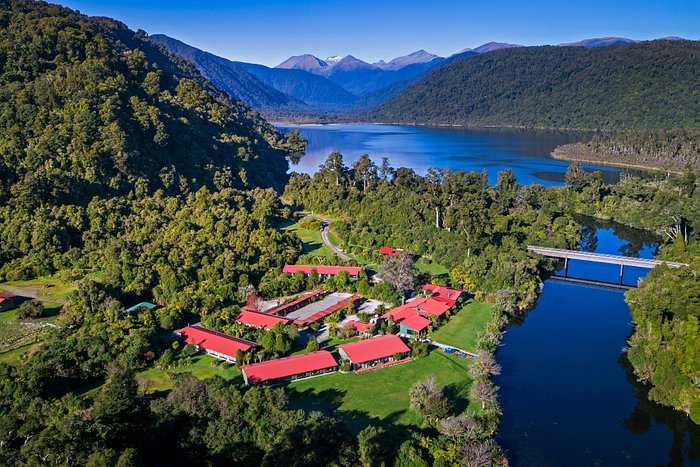
Photo / Supplied
Huddled beneath 800 year old Kahikatea trees on the banks of the sparkling Moeraki River, the lodge is the ultimate haven for nature lovers, situated in the heart of the 7 million acre Te Wahi Pounamu South West World Heritage site. Established in 1991, Anne and Gerry were instrumental in leading the crusade for forest protection status. The lodge has been ingeniously designed so that you feel enrobed by the majesty of New Zealand’s old-growth rainforest and its rich assortment of specimens. The relentless pest control work in the Moeraki Valley is reaping dividends – with a huge increase in native bird numbers.
The native bird life is exceptional, where twitchers can easily tick-off the welcome swallow, kereru, grey warbler, tui, bellbird, fantail and tomtit. Come nightfall, listen out for the distinctive two-syllable call of the morepork, plus the whistles of the kaka and the raucous screech of the kea - our beloved bush and mountain parrots. I loved watching the bossy, bullying tui binging on the nectar of the kowhai trees – dispersing the bellbirds off the kowhai, to seek nectar from the smaller giant fuchsia flowers. With bellies bursting in nectar, they were in full song.
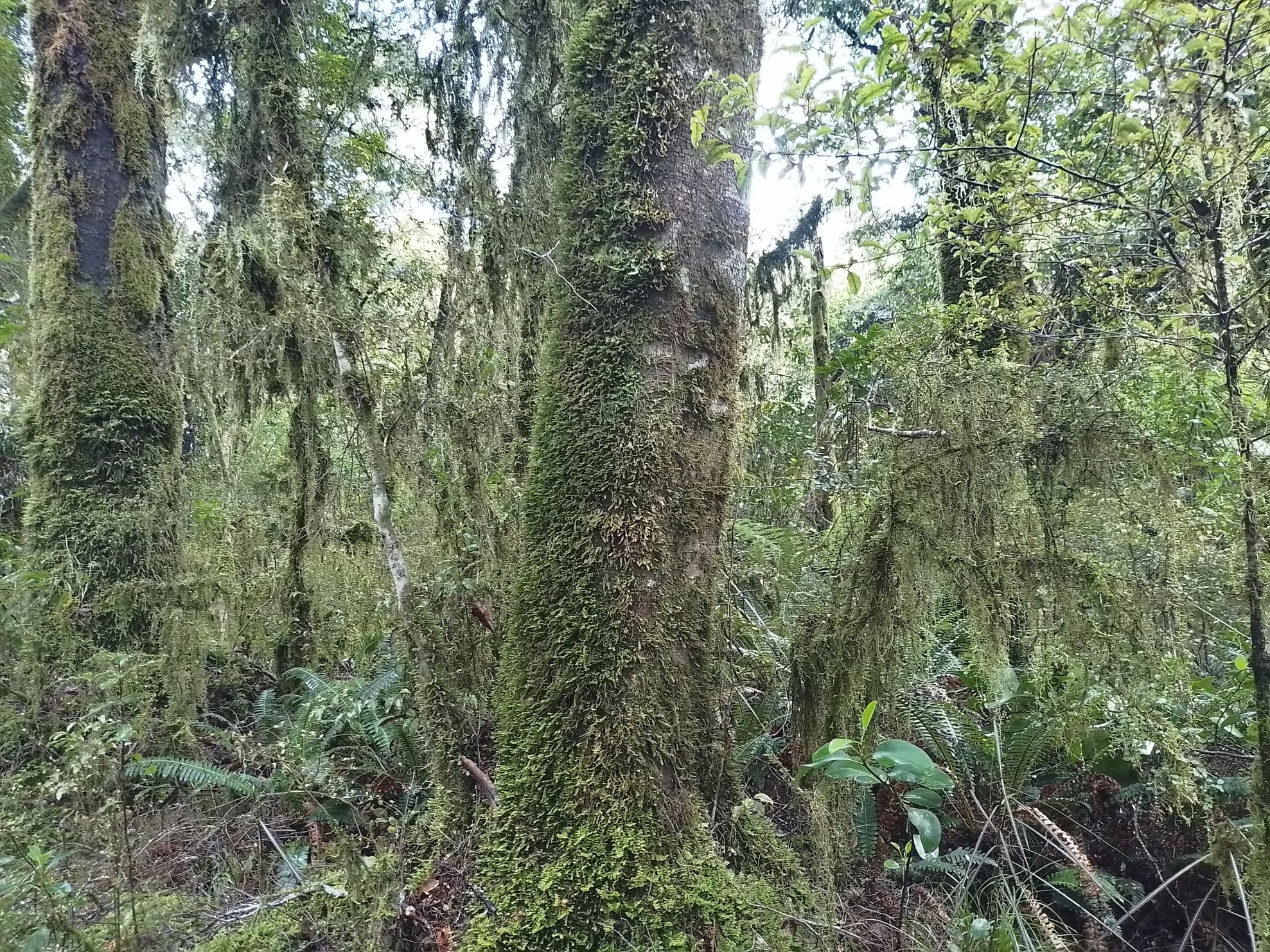 Photo / Mike Yardley
Photo / Mike Yardley
Their Wilderness Lodge experience is all-encompassing, with a wide array of on-site facilities and amenities, from the guest laundry and drying room to the fishing gear and kayaks, which are wildly popular for a blissful float on Lake Moeraki. Dining is another highlight, with a sprawling breakfast buffet, light lunch or picnic lunch, and sumptuous evening dinner. Accommodations are havens of comfort, strung around the leafy, lawned grounds. But the crowning glory are the guided nature activities, immersing yourself in the richness of the trees, the birdlife, the ferns, the glowworms – and even the night sky.
My most memorable experience was to join Gerry on a group encounter with the Tawaki, the Fiordland Crested Penguin. Driving south from the lodge, we walked a hidden trail beneath ancient rimu, kahikatea and silver beech, before reaching a magnificent wild stretch of beach which is one of their nesting sites. Gerry imparted a spooling reel of insights as we wandered through the forest, marvelling over the mosses, lichens, ferns – plus the tangled jungle of kiekie and supplejack vines. Between June and December, up to 30 pairs of Tawaki nest in the forest backing the spectacular white sand beach.
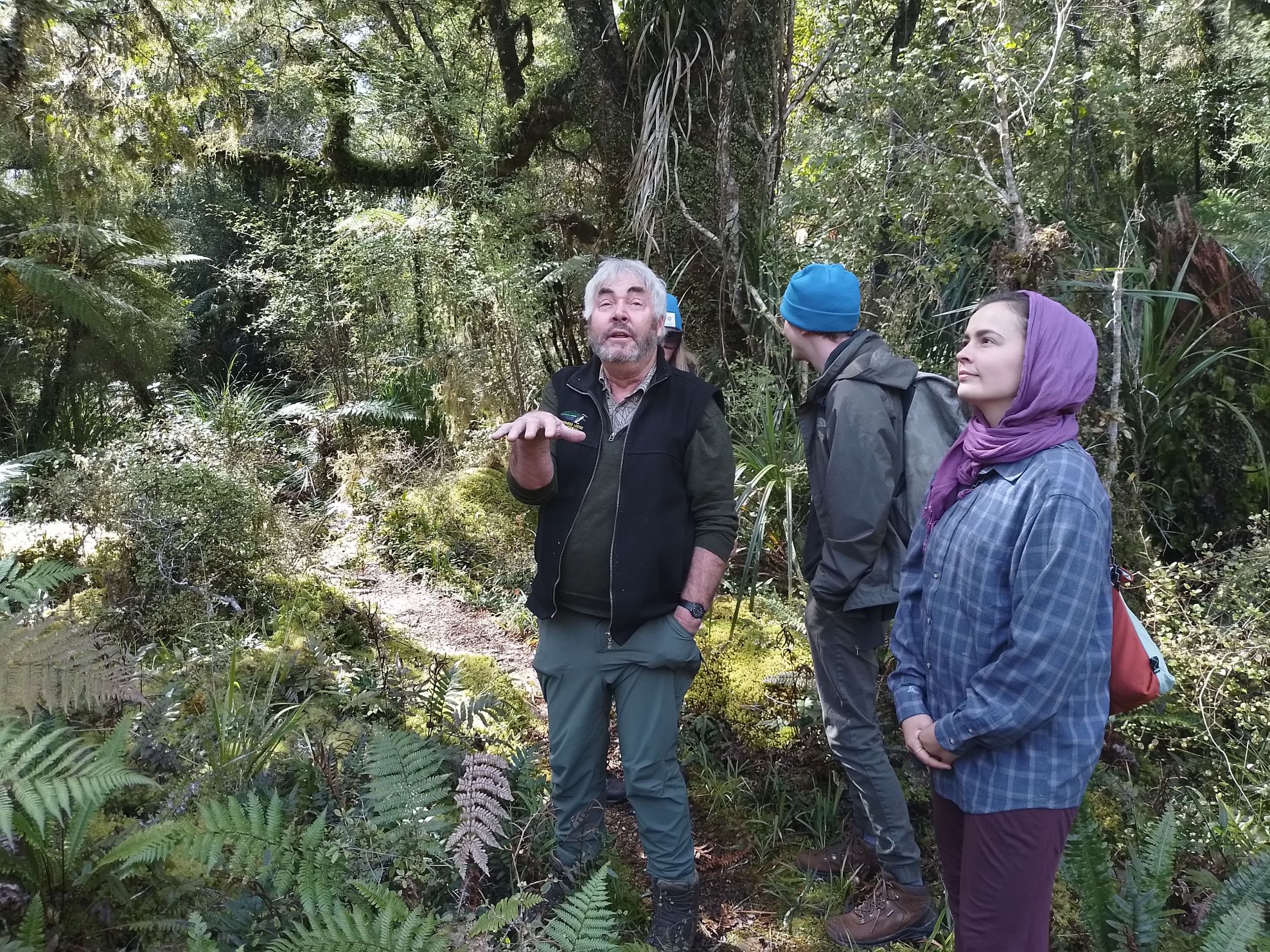 Forest walk with Gerry. Photo / Mike Yardley
Forest walk with Gerry. Photo / Mike Yardley
Over the course of 90 minutes, we gazed in awe as these shy penguins waddled back in forth between the churning ocean and rainforest nests. Walking upright and with purpose in their formal dinner-jacket attire, penguin encounters never fail to captivate. What makes the Tawaki even more endearing are those bright yellow crests, like crazy, quizzical eyebrows. It was utterly enchanting to quietly watch on as these guys scurried from the pounding surf to their rainforest nests. As an aside, Gerry also pointed out the wonderland of semi-precious gemstones spilling out over the beach, like serpentine, jade and rose quartz.
Together with the Yellow-eyed Penguin, the Fiordland Crested is one of the rarest penguins in the world. Current estimates put their population at fewer than 1500 pairs. July to December is the best time to see these penguins, during breeding season. However, they can also be seen in the moulting season, from mid-January to early March, when they come ashore to regain their waterproof, insulating coat. Adult penguins can travel long distances – these guys have been seen as far away as the Falklands and Southern Australia – sleeping on the surface of the water and returning to the same nesting site year after year.
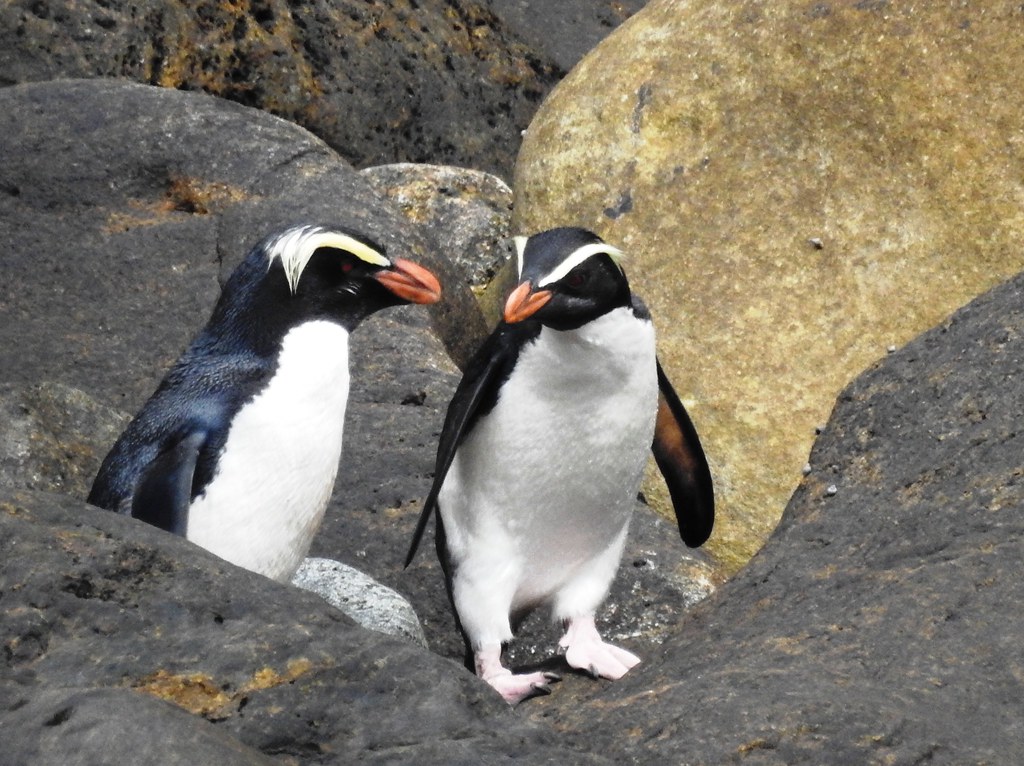 Photo / Supplied
Photo / Supplied
I also caught a glimpse of these penguins after taking the public walking trail to Monro Beach, just north of the Wilderness Lodge. The 45 minute walk is another grand encounter with the “dinosaur” rainforest with a lineage that reaches back 70 million years to Gondwana. headlined by rimu, matai and kahikatea. Giant fuchsia trees flank the creek leading you down to the beach. Wilderness Lodge Lake Moeraki is a wondrous escape with nature’s majesty, in excelsis. www.wildernesslodge.co.nz
Mike Yardley is our resident traveller on Jack Tame Saturday Mornings.
Take your Radio, Podcasts and Music with you









